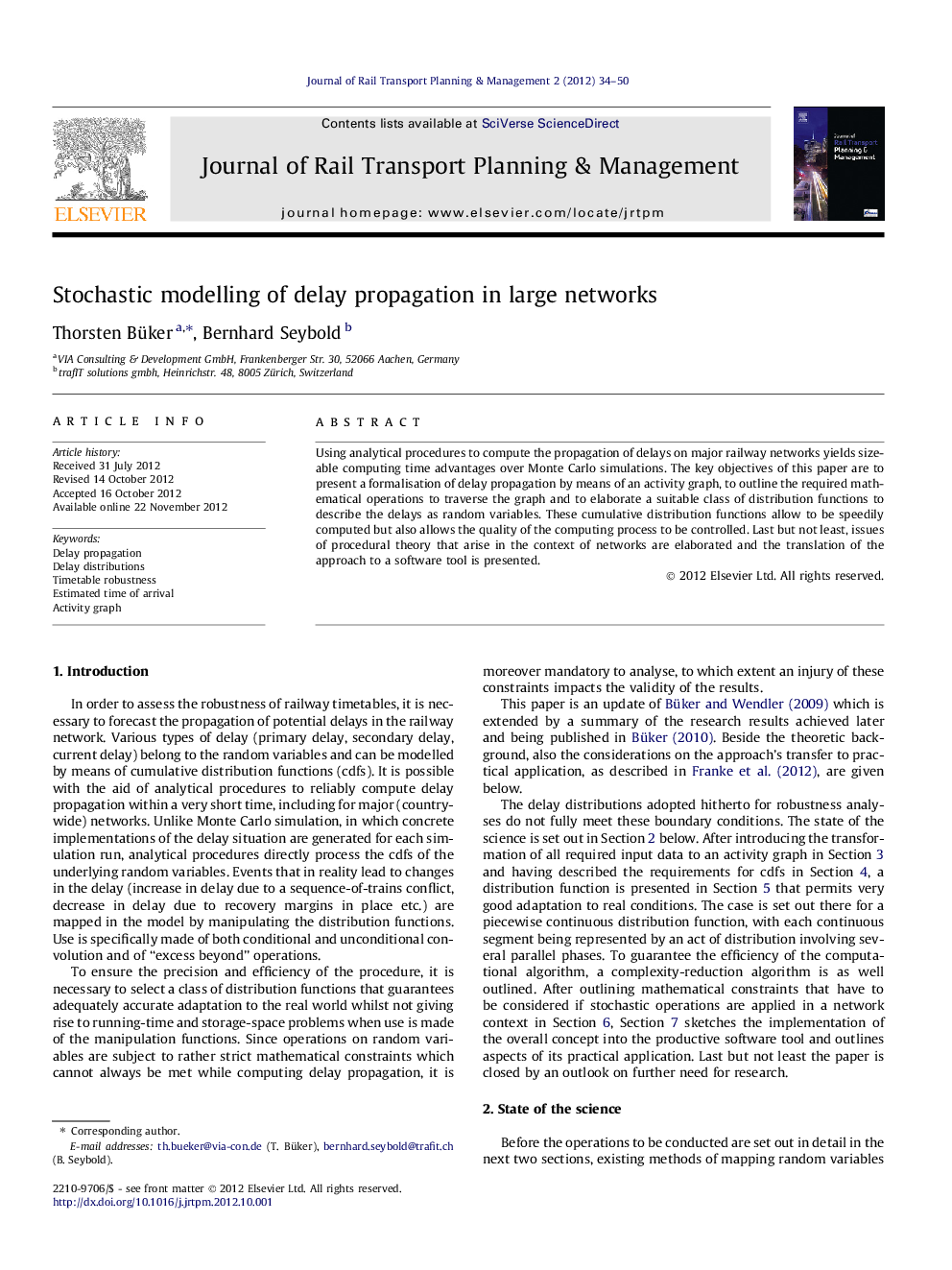| Article ID | Journal | Published Year | Pages | File Type |
|---|---|---|---|---|
| 286460 | Journal of Rail Transport Planning & Management | 2012 | 17 Pages |
Using analytical procedures to compute the propagation of delays on major railway networks yields sizeable computing time advantages over Monte Carlo simulations. The key objectives of this paper are to present a formalisation of delay propagation by means of an activity graph, to outline the required mathematical operations to traverse the graph and to elaborate a suitable class of distribution functions to describe the delays as random variables. These cumulative distribution functions allow to be speedily computed but also allows the quality of the computing process to be controlled. Last but not least, issues of procedural theory that arise in the context of networks are elaborated and the translation of the approach to a software tool is presented.
► The assessment of the operating quality of timetables was previously performed-if at all-with the aid of microscopic simulation exercises. Common to them is mapping disruptions by scattering in primary delays as deterministic variables. Obtaining statistically safe pronouncements thus involves conducting a large number of simulation runs and pooling results (“Monte Carlo simulation”). The large amount of time required is not conducive to the frequent use that iterative optimisation of an operating concept would necessitate. The mostly microscopic modelling of infrastructure that the systems call restricts the areas of study. This does not permit evaluation either of large, complex networks or of strategic planning processes. ► In the absence of a suitable approach, there has so far been little information on stability risks during the early planning phases. Variant decisions on timetable concepts, operating-process alterations or infrastructure development are, therefore, usually taken without considering their impact on operating quality. This need triggered research work conducted at RWTH Aachen University from 2006 to 2011. As the result, instead of the mode of procedure set out above, direct consideration is given to delays as random variables and their manipulation. If delay propagation is analytically mapped, then it is possible to perform reliable calculations in a short time even for large networks. ► It has proved possible to translate the outcomes into an application in short time. The resulting tool is available since summer of 2011 and is currently in use by SBB CFF FSS and Infrabel. Both infrastructure managers apply OnTime to assess the operating quality of timetable variants as well as to elaborate the impacts of particular incidents, e.g. temporary speed restrictions. The low computation times permit a more iterative improvement of timetables than it was previously possible.
